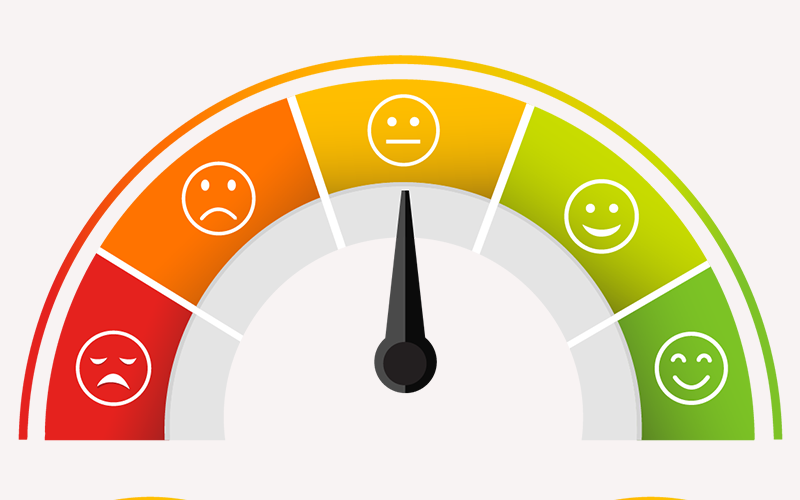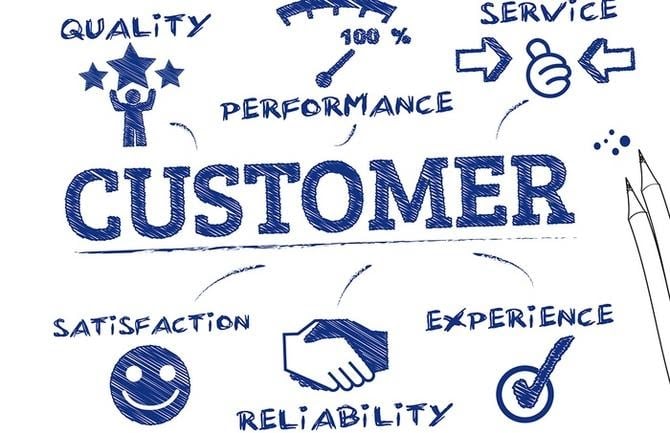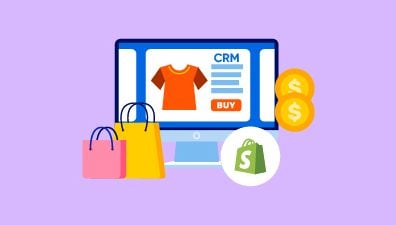Customers today are, undeniably, playing a very important role in determining the success or failure of a business, no matter how big the company is. Now, tools like customer experience metrics are referred to more as an efficient and accurate way to improve the customer experience.
So, what are customer experience metrics?
First of all, customer experience is what customers feel and think during their research, contact, purchase, and use of goods/services, etc. until they review the product and get feedback from the seller. It is vital for businesses to track customer experience journey to see if their clients feel satisfied at each touchpoint on that journey. From there, they will have plans to improve their services better.
However, the customer experience is tangible, meaning you cannot touch or see its specific form. So how do you know if the customer is satisfied enough?
Here’s your deal:
Use one of the powerful customer experience metrics.
They are based on metrics collected about customers to apply certain measurement formulas, thereby calculating their satisfaction level. There are many customer experience measurement formulas around the world that correspond to different metrics, based on diverse factors, such as the percentage of customers who will recommend your company to their friends or the scale on which they are comfortable with a certain service provided by your company.
In this article, you’ll learn about the world’s most reliable and accurate customer experience metrics, along with how to apply and calculate them. If you do not have much knowledge of this new field, don’t worry since we will guide you from A to Z.

Table of Contents
What are customer experience metrics?
Customer experience metrics are customer experience measurement methods based on numbers that directly impact business performance and customer experience. These numbers may change over time and at each stage of the business’s operation. Therefore, you need to choose the right metric for your business size before tracking and surveying it.
There are 6 basic metrics that we always advise our customers to use for customer experience measurement, including Net Promoter Score (NPS), Customer Lifetime Value (CLV), Customer Satisfaction (CSAT), Customer Retention rate, Customer Churn rate, and Customer Effort Score (CES). Before diving into the details, let’s look at the importance of customer experience metrics to your ‘s business.
Why you should do customer experience measurement
Here something you should know:
Most consumers (84% specifically) would appreciate a company that provides a good customer experience as its products or services, according to Salesforce 2019. It proves that customers do not only have the shopping purpose but increasingly look at the way you treat them, who may not pay money to buy your product. That is why we recommend that you be customer-centric and improve your services at any touchpoint in your customer experience journey with key customer experience metrics. While there are very few businesses focusing on this, it will give you a huge competitive edge in the marketplace.
Especially if you are doing business online, customer experience is definitely the most important factor in the current Covid-19 pandemic. The good news is that even digital customer experience metrics will help you optimize metrics and deliver the best customer experience.
Top 6 key customer experience metrics for your business
Net Promoter Score (NPS)

NPS is world-renowned for its high applicability and accuracy in almost any field. That’s why two-thirds of businesses around the world use this customer experience metric, including big names like Apple or Airbnb.
How it works?
NPS measures the percentage of customers who are willing to introduce your brand to others by asking them to score on an 11-point scale. And the result is:
- 0 – 6: Detractors, who are not satisfied and could damage your reputation.
- 7 – 8 points: Passives, who are satisfied with their purchase but easily robbed by competitors.
- 9 – 10: Promoters, who are fully confident and satisfied, willing to buy back, and recommend to others.
How to calculate it?
NPS (%) = [(P – D) / R] X 100
In which: R is the total number of surveys.
Customer Satisfaction (CSAT)
While NPS indicates the end result, CSAT focuses on exploiting the quality of customer experience at a particular stage in the process of customer interaction with your company to buy and use products. Facebook and Google are the two best testimonials of the ease of use and popularity of this customer experience metric.
How it works?
Similar to NPS, CSAT also asks customers to do a simple survey in less than 3 minutes, with the answer being a score of usually 1 to 5. It is sent to customers as soon as they interact or after the transaction so that they can accurately convey their feelings. Plus, it also takes advantage of their willingness to do surveys to avoid wasting time for them later.
How to calculate it?
CSAT (%) = (Number of Positive Responses / Total number of Survey Responses) X 100
Customer Effort Score (CES)
Ease of customer experience plays an equally important role as being responsive to customer requirements and quality of products, services. For example, when comparing two companies that are similar but provide different transport services, it is natural that customers will choose the one that allows them to receive goods more conveniently, without having to move too many times at a lower price.
If you’re interested in whether your customer’s buying journey is causing them problems, use this metric.
How it works?
CES provides buyers with a number of questions (not too many) and the scales for each question to gauge the level of engagement for that, usually “very low,” “low,” “moderate,” “high,” or “very high,” etc. The final question of this survey is usually “Will you probably continue to purchase goods/services here?”.
How to calculate it?
CES (points) = Sum of All Customer Effort Scores / Total Number of Survey Responses
Customer Churn Rate
Wondering that you have been selling for a long time, but it seems your customers are new buyers? To measure whether that is accurate or not, we recommend using the Customer churn rate, which is the proportion of people who stopped buying and using your products or services.
How it works?
This metric tracks the number of customers of a company at the beginning and end of a particular period. It represents the loss of the number of customers who continue to use the product. From this rate, you can calculate the business value that you missed out on.
The people it tracks are those who have previously purchased products one or more than one time from your company. After that, they feel dissatisfied, have lost, or no longer need to use them, so they stop the purchase.
How to calculate it?
Customer Churn Rate = (S – E) / S
In which: S represents the number of buyers at the start of a period, and E is none other than the number of those at the end of the period.
Customer Retention Rate
In contrast to the Customer churn rate, the Customer retention rate indicates the percentage at which your customers will return to buy goods or services the next time. In other words, the sum of these two metrics is 100% of your customers for a given period of time.
If your company’s customer retention rate is high, congratulations. Your customer experience is really strong. Not only does it lower your overall costs, but it also creates a huge source of loyal customers for your business’s long-term growth.
How it works?
This ratio also uses the source of customers at the beginning (S) and the end (E) of a period to compare and measure. Yet, it adds one more factor is the number of new customers you attract during that period, which is S.
How to calculate it?
Customer Retention Rate = [(E – N) / S] X 100
Is it needed to use all the customer experience metrics above?

No. Often, companies ask their customers to provide information or do surveys but do not understand what they will do with them and how to exploit them. Besides, when you utilize too many metrics, they won’t add value. On the contrary, you won’t be able to focus on the problem that should have been fixed to improve the customer experience strategy.
Nonetheless, several different metrics can also be combined and are more effective than using just one customer experience metric. After you have a clearer view of important metrics, including website customer experience metrics, choose to combine one related behavioral metric and one customer experience metric.
In general, you should understand metrics before deciding to exploit them from your customers and should not over-measure metrics to avoid wasting time and effort.
Final thought
Let’s be honest. We all want to maximize profits to grow fast and gain a competitive advantage in the market. However, rapid development based on maximum profit will be difficult to be sustainable. The only way is to build a strong customer base based on creating innovative and positive customer experiences. This will help your customers see they are the target and the center your business is aiming for.
The customer experience metrics we’ve provided above are routinely used by most successful businesses around the world. If you’ve also used one of them, don’t hesitate to let us know your thought. Like and share the article if useful for you. Thank you.











